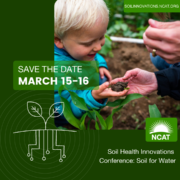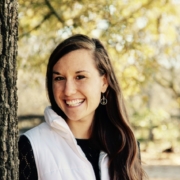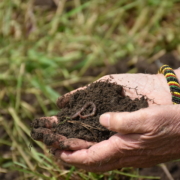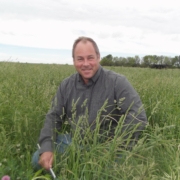Sopping Stories from Waterline Farm
by: Hernan Colmenero
Tammi and Stephen Bell are the kind of couple who believe that less is more. Their motto seems to be to let the plants and animals do the work. That’s exactly what they’re doing at Waterline Farm in Pryor, Oklahoma.
Now, they are not completely hands off. Although they don’t usually mow their lawn, much to the chagrin of their neighbors, their goats do the mowing by grazing it. Similarly, they believe it’s important to first think about infrastructure. That means digging small trenches to direct the flow of water and building hügelkultur mounds to slow and keep water on their land a bit longer. It also means being patient and observing the land. They may agree with Michelangelo when he said “the task of the sculptor [is] to discover [the statue].” They want to discover the beauty of the land and help it become what it wants to become.
The Bell’s goal with Waterline Farm is to become a homestead demonstration site practicing regenerative agriculture with an emphasis on ecological stewardship. Their operation has seen its fair share of challenges, but the Bell family has turned them into opportunities. In 2019, a massive flooding event raised the level of Lake Hudson in Oklahoma, on which their property is located, and crept up several hundred feet onto the pasture. As the water receded, it created natural contour swales, which they used to plant sycamore and oak trees to increase water absorption and retention, therein slowing the flow of water to the lake. Realizing that their shoreline was fragile after seeing how their neighbor’s shoreline receded, they also planted several more sycamore and cypress trees closer to the shore, creating a wide strip of protection. Additionally, they made use of the silt the lake water brought and let the native grasses grow tall, allowing the deep roots to take hold in the soil. This added organic matter, created more soil aggregates, and increased the presence of wildlife, such as Monarch butterflies and a resident bald eagle. Both of those changes served to expand their silvopasture system while making progress on their goals of regeneration and wildlife conservation by simply giving the land more of what it could use.
But not everything can be accomplished by watching from afar. Stephen is adamant that one needs to get their hands dirty, their boots muddy, and observe the land from various places to get an idea of where the water is going and what the land is doing. Then, it’s important to act. In this way, he noticed that rainwater was flowing from his property into his neighbor’s. So, he built up hügelkultur mounds along that edge of his property to slow the flow of water. Most recently, he dug a trench with his 39-hp tractor to direct water to his orchard. All these actions serve to catch and hold more water in their soil, lessening the potentially damaging effects of floods.
Even though the Bell family doesn’t do it for the money (they’re both comfortably retired), they expect to turn a profit this year. They are saving money by not buying costly fertilizers and by supplementing their groceries with the food they grow and harvest themselves. Even their livestock enjoy the fruit of their harvests, which means less spent on buying animal feed. Moreover, their farm has garnered the attention of Food Animal Concerns Trust (FACT), the Oklahoma Forestry Department, the U.S. Department of Agriculture (USDA), the National Center for Appropriate Technology (NCAT), and perhaps most importantly, their fellow community members. Some of this has led to grants and other beneficial financial opportunities. Tammi says it is “the big circle coming back.”
The Bell family says that the peer-to-peer learning systems such as Women, Livestock, and the Land course and the Soil for Water Network, both part of NCAT, have been instrumental to their success. “People feel isolated and when they see others doing something similar, that works,” says Tammi.
Learn more in the YouTube video, Welcome to Waterline Farm.

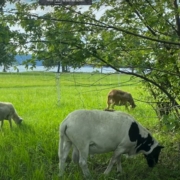
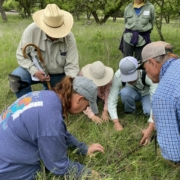
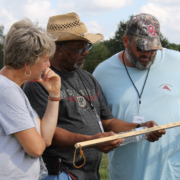 NCAT
NCAT